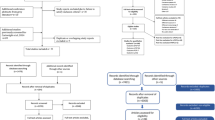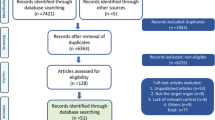Abstract
Introduction and hypothesis
Ewes develop pelvic organ prolapse (POP) and may be a suitable model for preclinical studies evaluating cell-based therapies for POP. The aim of this study was to establish a clinical score of vaginal weakness and to compare POP Quantification System (POP-Q) values in conscious nulliparous and parous ewes and determine whether ewes are a suitable POP model.
Methods
Ewes (n = 114) were examined while conscious, without sedation, and standing in a V conveyer by adapting the human POP-Q measurement. Ovine POP was defined as descent to the introitus from POP-Q points Aa 3 cm above the introitus on the anterior wall, Ap 3 cm above the introitus on the posterior wall, or increased Ba anterior wall descent above the urethra (≥0). A test–retest showed good inter- and intrarater reliability.
Results
There was no evidence of tissue mobility at Aa, Ap, Ba (all −3 cm) in nulliparous ewes (n = 14). In contrast, multiparous ewes had a median of −1 and interquartile range (IQR) (−2 to 0) for Aa, [0 (−1 to 0)] for Ap and [0 (−2.75 to 0)] for Ba (n = 33; P < 0.0001 in comparison with nulliparous) ewes. Ovine vaginal displacement was seen in 50.9 % of parous ewes and was strongly associated with parity (P = 0.003).
Conclusions
A modified POP-Q in conscious ewes was established showing that the vaginal wall of parous animals has similar regions of weakness as do women and may be similarly related to parity. Ewes appear to be a representative preclinical model of human vaginal prolapse.


Similar content being viewed by others
References
Smith FJ, Holman CD, Moorin RE, Tsokos N. Lifetime risk of undergoing surgery for pelvic organ prolapse. Obstet Gynecol. 2010;116:1096–100.
Deprest J, Feola A. The need for preclinical research on pelvic floor reconstruction. BJOG. 2013;120:141–3.
Olsen AL, Smith VJ, Bergstrom JO, Colling JC, Clark AL. Epidemiology of surgically managed pelvic organ prolapse and urinary incontinence. Obstet Gynecol. 1997;89:501–6.
Food and Drug Administration USA, Urogynecologic surgical mesh: update on the safety and effectiveness of transvaginal placement for pelvic organ prolapse, 2011. http://www.fda.gov/MedicalDevices/Safety/AlertsandNotices/ucm262435.htm
Altman D, Väyrynen T, Engh ME, Axelsen S, Flaconer C. Anterior colporrhaphy versus transvaginal mesh for pelvic-organ prolapse. N Engl J Med. 2011;364(19):1826–36.
Withagen MI, Vierhout ME, Hendriks JC, Kluivers KB, Milani AL. Risk factors for exposure, pain, and dyspareunia after tensions-free vaginal mesh procedure. Obstet Gynecol. 2011;118:629–36.
Kasyan G, Abramyan K, Popov AA, Gvozdev M, Pushkar D. Mesh-related and intraoperative complications of pelvic organ prolapse repair. Central Eur J Urol. 2014;67(3):296–301.
Emmerson S, Gargett. Endometrial MSC as a cell-based therapy for pelvic organ prolapse. World J Stem Cells. 2015;8(5):202–15.
Couri BM et al. Animal models of female pelvic organ prolapse: lessons learned. Expert Rev Obstet Gynecol. 2012;7:249–60.
Abramowitch SD, Feola A, Jallah Z, Moalli PA. Tissue mechanics, animal models, and pelvic organ prolapse: a review. Eur J Obstet Gynecol Reprod Biol. 2009;144:S146–58.
Jackson R, Hilson R, Roe AR, Perkins N, Heuer C, West DM. Epidemiology of vaginal prolapse in mixed-age ewes in New Zealand. N Z Vet J. 2014;62(6):328–37.
Durrani AZ, Kamal N. Prevalence of genital tract problems in clinical cases of various species of animals. J Anim Plant Sci. 2009;19(3):160–2.
Knight KM, Moalli PA, Nolfi A, Palcsey S, Barone WR, Abramowitch SD. Impact of parity on ewe vaginal mechanical properties relative to the nonhuman primate and rodent. Int Urogynecol J. 2016;27:1255–63.
Ennen S, Kloss S, Scheiner-Bobis G, et al. Histological, hormonal and biomolecular analysis of the pathogenesis of ovine Prolapsus vagine ante partum. Theriogenology. 2011;75:212–9.
Ulrich D, Edwards SE, Su K, White JF, Ramshaw JAM, Jenkin G, et al. Influence of reproductive status on tissue composition and biomechanical properties of ovine vagina. Plos ONE. 2014;9(4), e93172.
Bump RC, Mattiasson A, Bo K, Brubaker LP, DeLancey JO, Klarskov P, et al. The standardization of terminology of female pelvic organ prolapse and pelvic floor dysfunction. Am J Obstet Gynecol. 1996;175:10–7.
Tegerstedt G, Mehle-Schmidt M, Nyren O, Hammarstrom M. Prevalence of symptomatic pelvic organ prolapse in a Swedish population. Int Urogynecol J. 2005;16:497–503.
Gyhagen M, Bullarbo M, Nielsen TF, Milsom I. Prevalence and risk factors for pelvic organ prolapse 20 years after childbirth: a national cohort study in singleton primipare after vaginal or cesarean delivery. BJOG. 2013;120:152–60.
Barber MD, Maher C. Epidemiology and outcome assessment of pelvic organ prolapse. Int Urogynecol J. 2013;24:1783–90.
DeLancey JO, Morgan DM, Fenner DE, Kearney R, Guire K, Miller JM, et al. Comparison of levator ani muscle defects and function in women with and without pelvic organ prolapse. Obstet Gynecol. 2007;109(2 Pt 1):295–302.
Khunda A, Shek KL, Dietz HP. Can ballooning of the levator hiatus be determined clinically? Am J Obstet Gynecol. 2012;206(3):246.e1–4.
Thomas DL, Waldron DF, Lowe GD, Morrical DG, Meyer HH, High RA, et al. Length of docked tail and the incidence of rectal prolapse in lambs. J Anim Sci. 2003;81(11):2724–32.
Otto LN, Slayden OD, Clark AL, Brenner RM. The rhesus macaque as an animal model for pelvic organ prolapse. Am J Obstet Gynecol. 2002;186(3):416–21.
Lee UJ, Gustilo-Ashby AM, Daneshgari F, et al. Lower urogenital tract anatomical and functional phenotype in lysyl oxidase like-1 knockout mice resembles female pelvic floor dysfunction in humans. Am J Physiol Renal Physiol. 2008;295(2):F545–55.
Pierce LM, Grunlan MA, Hou Y, Baumann SS, Kuehl TJ, Muir TW. Biomechanical properties of synthetic and biologic graft materials following long-term implantation in the rabbit abdomen and vagina. Am J Obstet Gynecol. 2009;200(5):549–8.
Gruber DD, Warner WB, Lombardini ED, Zahn CM, Buller JL. Anatomical and histological examination of the porcine vagina and supportive structures: in search of an ideal model for pelvic floor disorder evaluation and management. Fem Pelv Med Recon Surg. 2011;17(3):110–4.
De Tayrac R, Alves A, Therin M. Collagen-coated vs noncoated low-weight polypropylene meshes in a sheep model for vaginal surgery. A pilot study. Int Urogynecol J. 2007;18:513–20.
Ayen E, Noakes DE, Baker SJ. Changes in the capacity of the vagina and the compliance of the vaginal wall in ovarietomized, normal cyclical and pregnant ewes, before and after treatment with exogenous oestradiol and progesterone. Vet J. 1998;156:133–43.
Author information
Authors and Affiliations
Corresponding author
Ethics declarations
Funding
This work was support by the National Health and Medical Research Council (NHMRC) of Australia Project grants # 1021126 (CEG, JAW, AR), #1081944 (CEG, JAW, JA, AR), a NHMRC Senior Research Fellowship (1042298) (CEG) and from the Victorian Government’s Operational Infrastructure Support Program.
Conflicts of interest
None.
Rights and permissions
About this article
Cite this article
Young, N., Rosamilia, A., Arkwright, J. et al. Vaginal wall weakness in parous ewes: a potential preclinical model of pelvic organ prolapse. Int Urogynecol J 28, 999–1004 (2017). https://doi.org/10.1007/s00192-016-3206-2
Received:
Accepted:
Published:
Issue Date:
DOI: https://doi.org/10.1007/s00192-016-3206-2




